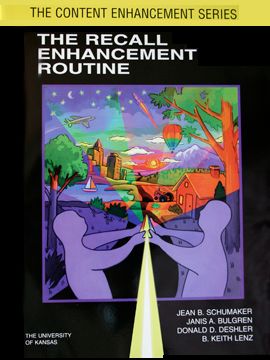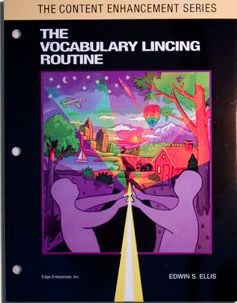The Vocabulary LINCing Routine (Printed Manual)
$31.00
Newly Added!
A Routine for Increasing Performance
Save this product for later
The Vocabulary LINCing Routine (Printed Manual)
Product Details
Teachers use the Vocabulary LINCing Routine to facilitate student use of two powerful tools (an auditory memory device and a visual memory device) to help them learn and remember the meaning of complex terms.
According to research, the best way to teach vocabulary words so students remember them is within the context of subject-matter instruction. For example, the best way to teach the meaning of the word “segregation” might be within a lesson about the U.S. civil rights movement in the 1960s. However, although some students will learn the meaning of the word with this approach, many students will not. They might not be able to remember the difference between “segregation” and “integration,” for example.
That’s where the Vocabulary LINCing Routine comes in handy! Based on a set of memory tools for vocabulary learning, the routine can be used by teachers to teach the meaning of vocabulary words in a memorable way during ongoing lessons. The teacher and students work together to record background knowledge, rhyming words, pictures, and stories on a LINCS Table in a way that helps students remember important parts of the definition of a new word.
This manual includes specific steps for introducing the LINCS Table to students, as well as the steps for developing LINCS Tables as a part of whole-class discussions. Multiple examples of LINCS Tables are included throughout the book, as are ideas for adapting the instruction and teaching students how to construct LINCS Tables on their own.
Learn More about the research behind The Vocabulary LINCing Routine
Please note that professional development, coaching, and infrastructure support are essential components to effective implementation of SIM instructional tools and interventions. It is highly recommended that you work with a SIM professional developer. SIM Professional Development is tailored to student needs. Fill out this form to tell us about your situation and to request professional development.
You May Also Like

The Recall Enhancement Routine (Printed Manual)
The Recall Enhancement Routine (Printed Manual)
A Routine for Increasing Student Performance
$31.00

The Recall Enhancement Routine (PDF Download)
The Recall Enhancement Routine (PDF Download)
A Routine for Increasing Student Performance
$31.00
Display prices in:USD
